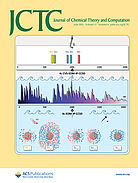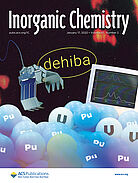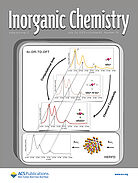Modelling of heavy elements and radionuclides physical and chemical properties in the context of the nuclear fuel cycle
Advancing Relativistic and Correlated Electron Simulations for Atomic and Molecular Systems
Simulating systems across the periodic table is essential for our research. A key factor is the inclusion of relativistic effects using the Dirac equation, significant for atoms with Z > 31 (Gallium) and inner electrons of lighter elements like Chlorine. Electron correlation, though a small part of the energy, is crucial for accuracy. Coupled cluster (CC) methods are among the most reliable, while density functional theory (DFT) offers a lower computational cost but may have limitations. We focus on developing relativistic coupled cluster (RCC) methods, notably EOM-CCSD for excited, attached, and detached valence states (HAL: hal-01863470v1) and core-excited and ionized states (HAL: hal-03011292v1), as well as computationally less demandig approximations to EOM-CCSD (HAL: hal-04153441v1).
Quantum Chemistry in Nuclear Safety: Advancing Heavy-Element Reactivity and Spectroscopy for Environmental and Waste Management
The PCMT team’s expertise in heavy-element electronic structure has contributed to improving nuclear thermodynamic databases for radioactive waste safety, where data gaps often exist.
- In collaboration with IRSN, we studied
- the reactivity of fission products (Ru and Pu) in the atmosphere during nuclear accidents, using quantum chemistry to develop kinetic models integrated into atmospheric dispersion codes (HAL: hal-03280305)
- the formation of gaseous plutonium oxide, a study that highlighted the strengths of Wave Function theory and DFT limitations (PhD S. Kervazo, HAL: hal-02151801v1).
- Data gaps on actinide and lanthanide complexation with phosphates were addressed through experiments on Cm(III) and Eu(III) ions (Coll. HZDR Dresden & Freie Universität Berlin) and quantum calculations (HAL: hal-03276079v1).
- For uranyl(VI), a PhD project by H. Oher (Coll. CEA Saclay & Marcoule) developed a quantum protocol to simulate luminescence spectra and assign vibronic bands. This research produced four publications (HAL: hal-02407977v1, HAL: hal-02955418v1, HAL: hal-03325299v1, HAL: hal-04017334v1), two featured on Inorganic Chemistry covers.
Enhancing Relativistic Coupled Cluster Methods: From Core State Simulations to Quantum Embedding for Complex Systems
The implementations in the RCC module (RELCCSD) of the DIRAC package offer significant user improvements over previous RCC approaches like FSCC and IH-FSCC (See also PCMT highlight). They are easier to use while maintaining accuracy, as shown in the study of ionized PuO₂ states (HAL: hal-02151801v1). RELCCSD allows the investigation of core states without orbital reoptimization, benefiting applications like X-ray photoelectron spectra (XPS). However, its poor parallel performance in less symmetric systems led to the development of the ExaCorr module, utilizing GPU-accelerated supercomputers for improved ground-state property simulations (HAL: hal-03170615v1). This advancement also enables the simulation of one- and two-photon processes using time-dependent response theory (HAL: hal-04172087v1, HAL: hal-04208348v1).
RCC’s applicability was extended using frozen density embedding (FDE), combining RCC with DFT for large systems. This method enabled simulations of core binding energies of halides and water droplets (HAL: hal-01913278v1; See also PCMT highlight) and XPS spectra of chlorinated species on ice surfaces (HAL: hal-03500186v2). FDE also showed promise for reducing computational costs in the calculation of X-ray absorption spectra (XAS) for actinides (HAL: hal-03990050v1). Although FDE reduces costs, it lacks accuracy to describe strong interactions between subsystems (such as when these are joined by covalent bonds), leading to the exploration of new embedding methods (HAL: hal-03452703v1) and multi-level frameworks, improving descriptions of XAS for solvated halides (HAL: hal-04431931v1). A novel embedded "real-time" approach (HAL: hal-02864878v1) solves the time-dependent Schrödinger equation to address strong external perturbations, which present a challenge to response theory, as well as the behavior of electrons at the attosecond scale.




